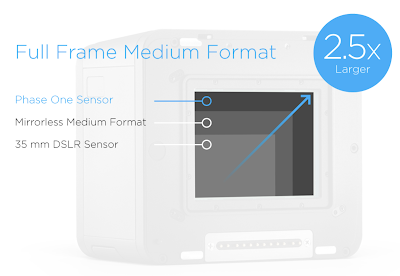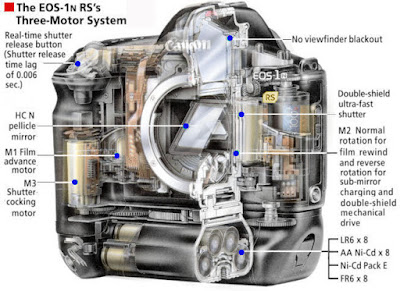Differentiate or Die: The Age of Specialisation Returns
One of the oddities produced by the dawn of the digital photography era is the multi-purpose professional camera. A typical example is the Canon 5D series (current iteration = 5D Mark IV). It can be used for a bit of sport/wildlife/action, portraiture, weddings, travel, street etc. It is a jack of all trades. In future, the multi-purpose consumer level camera will be some sort of small format mirrorless-EVF (ML-EVF) camera (eg M4/3, APS-C, 35mm small format). It will be interesting to see if it continues to remain acceptable for professionals to shoot with such devices across multiple scenarios. Such multi-purpose cameras are becoming increasingly capable eg high resolution, fast frame rate, good ergonomics/portability. They will remain popular and retain some sort of place in the market.
The rise to dominance of the multi-purpose professional camera can be put down to the loss of camera differentiation caused by the mass extinction of speciality camera firms from the apocalyptic end of the film era. The arrival of digital photography was like a Chicxulub asteroid hitting the marketplace. Prior to that, the camera market ecosystem had grown heavily differentiated. The rise of the digital camera marked the rise of an undifferentiated mass of rat-like hardy omnivorous survivor-species of camera that lacked specialization. Today we are seeing the slow return of species differentiation to the digital ecosystem.
The dominance of this type of multi-purpose camera has been so taken for granted in the digital era, that the older generation of reviewers stuck in the 2000s still expect to be able to test a medium format camera shooting wildlife only to wonder why it is so subpar in its performance. The standard tests digital era reviewers run on cameras is stuck in the age of the dawn of digital photography. Nobody back in the 1980-90s would have taken a large format film camera for testing onto a race track shooting motorsports only to conclude that its performance was substandard. It would simply have been understood that it was intended for studio and landscape photography. Applying the wrong test invariably results in spurious conclusions.
Today is the age of the slow return of the speciality camera in a digital field that is becoming increasingly differentiated as a result of increasing technological maturity. With that, the dominance of one-size-fits-all cameras will slowly become less prominent with each maker preferring to take up a specialist niche in the marketplace, though this species of omnivorous camera will have its niche too. The digital camera equivalent of the indestructible cockroach guaranteed survival in a post-apocalyptic digital landscape will be the phone camera. In the marketplace as in Nature, the survival of the fittest means in the face of competition from such species means that high-end makers need a specialist niche. It is something driven by survival of the fittest: either differentiate to find your niche or die.
I have predicted that optical viewfinder DSLR (OVF-DSLR) systems will evolve into pellicle-mirror electronic viewfinder systems (PM-EVF) specialising in shooting fast action. It means that 35mm format will once again be small format, a speciality format for an ever more restricted range of applications (although the role of 35mm format in the digital era will differ to its role in the film era). I also predict that medium format will return to the mainstream of photography to occupy a position similar to what it did in the film era. Just as small format is already well differentiated going from phone camera format, 1", M4/3, APS-C, and 35mm formats, so too will medium format be increasingly offered in a greater variety of sizes. It is only a matter of time before the digital equivalents of 6 × 6, 670 and 680 formats will again be offered. We may even eventually see the return of large format in digital form (125 × 100mm dimension sensor or larger).
With greater differentiation in the market, reviewers who expect every camera to be a Swiss army knife that does everything equally well will increasingly start to seem like dinosaurs from the ancient era of digital photography's infancy where cameras were expected to be one-size-fits-all multi-purpose appliances. Reviewers complaining about the frame rate of a medium format camera shooting sports will look like someone who reviews a high-end handcrafted sashimi knife only to be utterly bewildered over why anyone would pay so much for such a knife that fails to open wine bottles like a Swiss army knife. This species of early digital era reviewer will soon face a species extinction event themselves.




Comments
Post a Comment